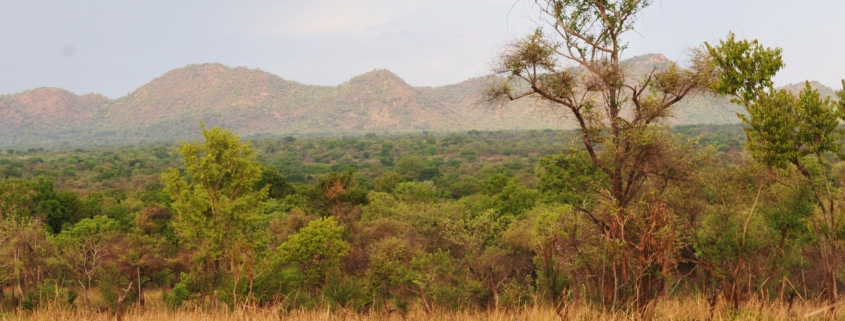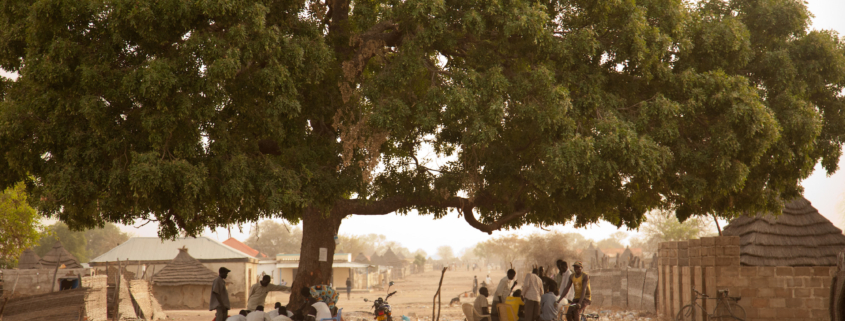This report assesses the community-based disaster risk management (CBDRM) approaches in South Sudan. It identifies challenges with the implementation of the CBDRM in the country, such as exclusion of youth and women from decision making process. To enhance the community resilience, it provides some recommendations on disaster risk reduction infrastructure and capacity building for the CBDRM. Download
About The World Bank
This author has yet to write their bio.
Entries by The World Bank
FAO teamed up with the World Bank on this strategic analysis of the investment, policy and institutional support needed to shift South Sudan’s agriculture sector from humanitarian relief to a development-oriented growth path. The team carried out a thorough review of lessons learned in South Sudan and other conflict-affected countries and held consultations with a wide range of stakeholders in the country. As a result, four complementary investment strategies were identified: agriculture production and food…
In our last blog post titled Leave No ‘R’ Behind: Understanding the Importance of Fostering Resilience I in the Context of Fragility, Conflict, and Violence, we discussed how experiences and understanding of resilience differ across different levels of society. Building on that discussion, the following discussion explores programmatic approaches that can be used by the World Bank and other development and aid partners to foster resilience. Several elements of program design and implementation can be…
Despite the signing of the revitalized peace agreement in 2018, violence continues to impact communities across South Sudan. Almost 4 million South Sudanese are displaced, including 1.7 million internally displaced people and 2.3 million refugees abroad, with women and children disproportionately affected. In the face of these challenges, however, communities across the country continue to draw on both established and new strategies to face the impacts of fragility, conflict, and violence (FCV). These strategies offer…
South Sudan is at a crossroads in its efforts toward recovery, reconstruction, and development. South Sudan gained independence in 2011, in what was expected to be a new dawn for the conflict-torn country. At the time, optimism was high, given high commodity prices, the country’s abundant natural resources, and international goodwill. However, weak institutions and recurring cycles of conflict have curtailed progress, and often reversed gains. Initial peace efforts proved futile, and the country relapsed…
South Sudan is at a crossroads in its recovery, reconstruction, and development. With weak institutions and recurring cycles of violence, South Sudan remains caught in a web of fragility and economic stagnation a decade after independence. This Country Economic Memorandum (CEM) discusses South Sudan’s economic performance since independence, highlighting the need for the country to leverage its natural capital in the agriculture and oil sectors to support recovery and resilience. Economic recovery has stalled in…
South Sudan faced significant headwinds in FY2020/21, with the pandemic, floods, and violence flareups affecting economic activities. Consequently, the economy is estimated to have contracted by 5.4 percent in FY2020/21. Oil production declined by 5.9 percent as floods affected production and the COVID-19 pandemic delayed new investments to replace exhausted wells. In the agriculture sector, flooding precipitated estimated losses of 38,000 tons of cereals (4.3% of 2020 production) and 800,000 livestock according to FAO estimates….
Building upon the literature on contact theory, this paper explores the role of inter-group interaction in shaping social cohesion between refugees and host communities in East Africa. It draws upon first-hand quantitative (n=16,608) and qualitative data collected from refugees and nearby host communities in urban and camp-like contexts in Ethiopia, Kenya, and Uganda. Focusing on the Uganda data, OLS regressions reveal a positive and significant correlation between refugee-host interaction and the perception of hosts towards…
Relative to the last assessment in November 2020, the baseline in this Debt Sustainability Analysis(DSA) has slightly higher oil prices and higher need for food imports due to severe flooding, whichhas destroyed food stocks and crops ahead of the main harvest season, but is otherwise broadlyunchanged. South Sudan’s debt is assessed to be sustainable with a high risk of debt distress for both externaland overall public debt.1 Specifically, there are temporary breaches in two out…
This study assesses jobs in businesses and NGOs in the towns of South Sudan. It is based on a 2019 business survey that includes informal and micro enterprises, as well as a dedicated survey of foreign-owned businesses. The business community is typical of a low-income post-conflict country, but with a particularly weak productive sector and an outsize importance of NGOs and foreign-owned businesses. Two in five commercial businesses are foreign-owned; they employ far more South…
Some Infos
Lorem ipsum dolor sit amet, consectetuer adipiscing elit. Aenean commodo ligula eget dolor.
Pages
- About Our County Profiles
- Blog
- Case Studies Grid
- Central Equatoria
- Conflict Sensitivity Resource Facility South Sudan
- Contact Us
- Contribute a Repository Article
- County Profile HTML links
- County Profiles
- COVID-19 HUB
- Covid-19 information page
- CSRF About Us
- CSRF Helpdesk
- CSRF Helpdesk Form
- CSRF Login
- Dashboard
- Deliverables
- Demo
- Events
- Forgot password
- Guides, Tools and Checklists
- Helpdesk
- Home
- Latest
- Looker Studio
- Subscribe


